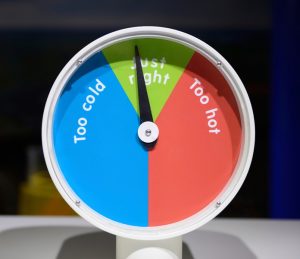 Heat pump technology has really caught on in the residential sector relatively recently. Too many homeowners still overlook the many benefits that heat pumps have to offer, though. Today, we want to walk you through a few of them. Most notably, how the heat pump is able to offer both effective cooling and dependable, highly efficient heating, too! Sound too good to be true? Well, it’s not—and the concept behind this ability is actually fairly simple once it is broken down.
Heat pump technology has really caught on in the residential sector relatively recently. Too many homeowners still overlook the many benefits that heat pumps have to offer, though. Today, we want to walk you through a few of them. Most notably, how the heat pump is able to offer both effective cooling and dependable, highly efficient heating, too! Sound too good to be true? Well, it’s not—and the concept behind this ability is actually fairly simple once it is broken down.
Of course, a simple concept does not translate to a simple system. Heat pumps, like any other whole-house HVAC system, require professional installation, maintenance, and repair services in order to function properly when you need them most. That is why you should leave your heat pump services in Colorado Spring to our team. We’ll make sure that your heat pump is able to keep you comfortable reliably, regardless of what the weather outside may be! Read on to learn more!
Heat Transfer vs. Heat Generation
Let’s get a quick description out of the way. A heat pump is able to heat homes with incredible efficiency because it is not necessary to generate new heat. Instead, the heat pump makes use of heat that is already present in the air outside. Now, this doesn’t mean that the same effect can be achieved by opening your windows in the winter to leat heat in, obviously. So, how does this method of heat transfer work?
The Refrigerant Cycle…
To understand how a heat pump heats, you first need to understand how a central air conditioner cools—because a heat pump can do that, too!
A central AC doesn’t generate new “coolness.” When you use an air conditioner to cool the air in your home, that coolness that you feel is really the absence of heat. The central air conditioner removes heat from the air in your home by evaporating refrigerant in the indoor evaporator coil. Then, the warmed refrigerant heads out to the condenser coil in the outdoor unit. There, it is condensed and its heat is released.
…and Now, Its Reversal!
The heat pump cools a home in much the same way as the central air conditioner. However, it also has a component called the reversing valve, which allows the system to reverse its operation by reversing the flow of its refrigerant and the function of its coils.
That means that in its heating mode the heat pump evaporates refrigerant in the outdoor coil. That allows it to remove heat from the air outside. That refrigerant is then compressed, which further boosts its thermal energy. Then, the refrigerant heads to the indoor coil, where it is condensed in order to release its heat. That allows you to heat your home without making new heat!
Only a very small amount of electricity is used in this process, so you heat your home with minimal energy expenditure. That results in a green, affordable heating experience.
